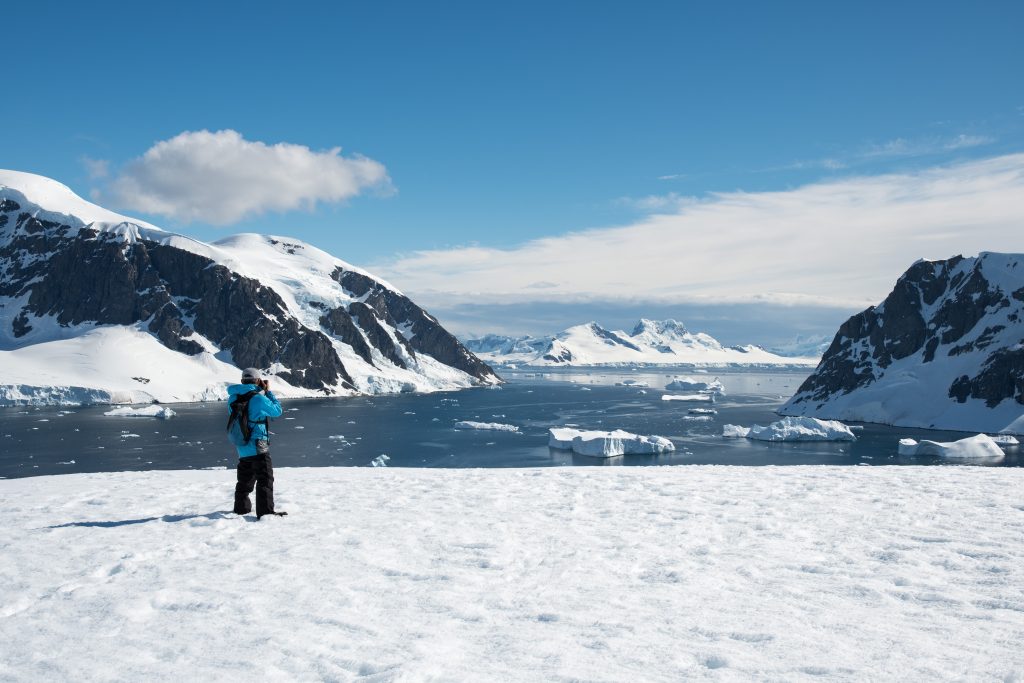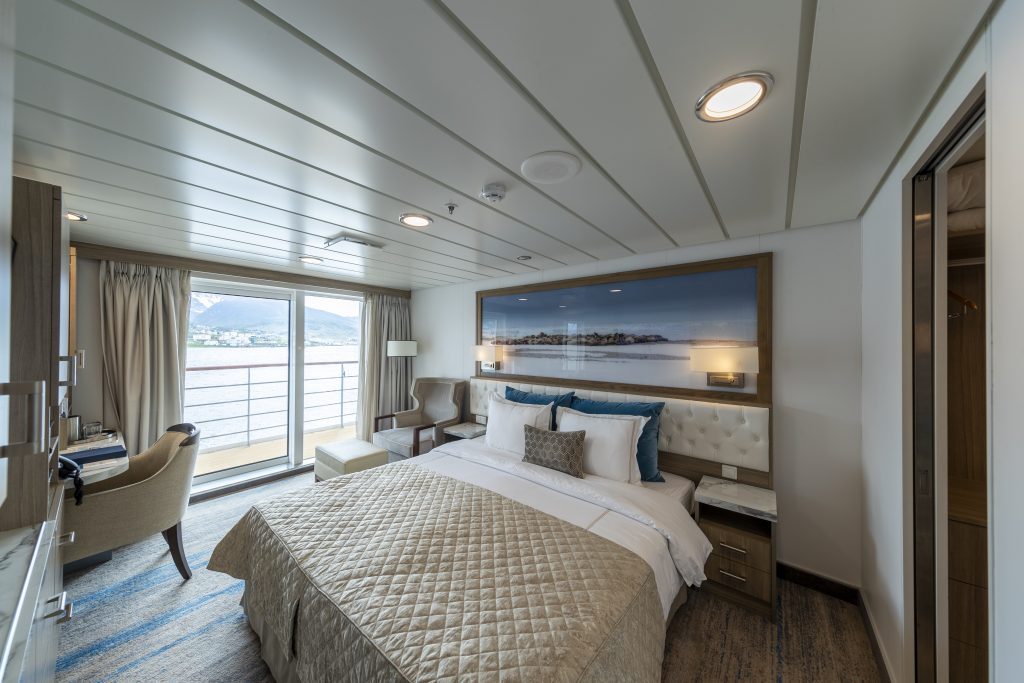Voyage Overview
This is a once-in-a-lifetime opportunity to witness the beauty and majesty of this remote and pristine environment.
Calling all pioneers, history buffs and adventure lovers for an epic adventure across the southern seas. Follow in the footsteps of explorers such as Scott, Ross, Amundsen and Shackleton and embark on a journey very few people on this planet have made. Sail beyond the Antarctic Circle, uncover wonders of the Ross Sea, explore the Peninsula and the incredible sights in between!
Trip Details
Duration: 34 Days
Ship: Greg Mortimer, Premium Ship, 130 Guests
Start: Dunedin, New Zealand
End: Ushuaia, Argentina
Highlights:
- Skirt rowdy beaches crowded with harems of New Zealand (Hooker’s) sea lions to reach rātā forests where rare yellow-eyed penguins can be found.
- Revel in the richness of the unique Ross Sea ecosystem, part of the Ross Sea Region Marine Protected Area and a Sylvia Earle Mission Blue “Hope Spot”.
- Navigate through gleaming pack ice alive with Weddell and leopard seals, Adélie and emperor penguins and whales feeding in fathomless leads.
- Reflect on the remarkable achievements of the Heroic Age explorers as we attempt to visit some of their beautifully preserved historic huts (conditions permitting).
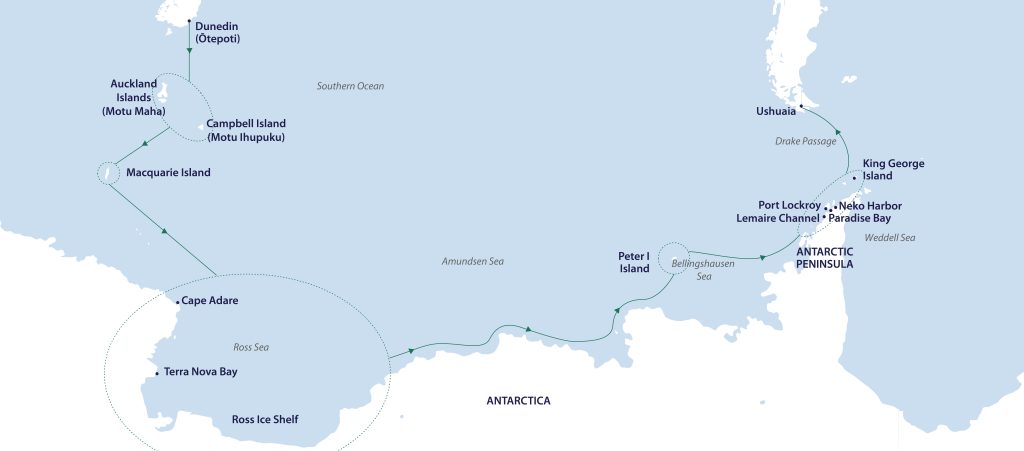
Trip Itinerary Overview:
Day 1: Arrive Dunedin, New Zealand
Day 2: Embarkation
Day 3: At Sea
Days 4-6: New Zealand’s Subantarctic Islands
Day 7: At Sea
Day 8-9: Macquarie Island
Days 10-12: At Sea
Days 13-18: Ross Sea
Days 19-26: Cruising, Cross the International Date Line
Days 27-31: Antarctic Peninsula
Days 32-33: At Sea
Day 34: Disembark Ushuaia, Argentina
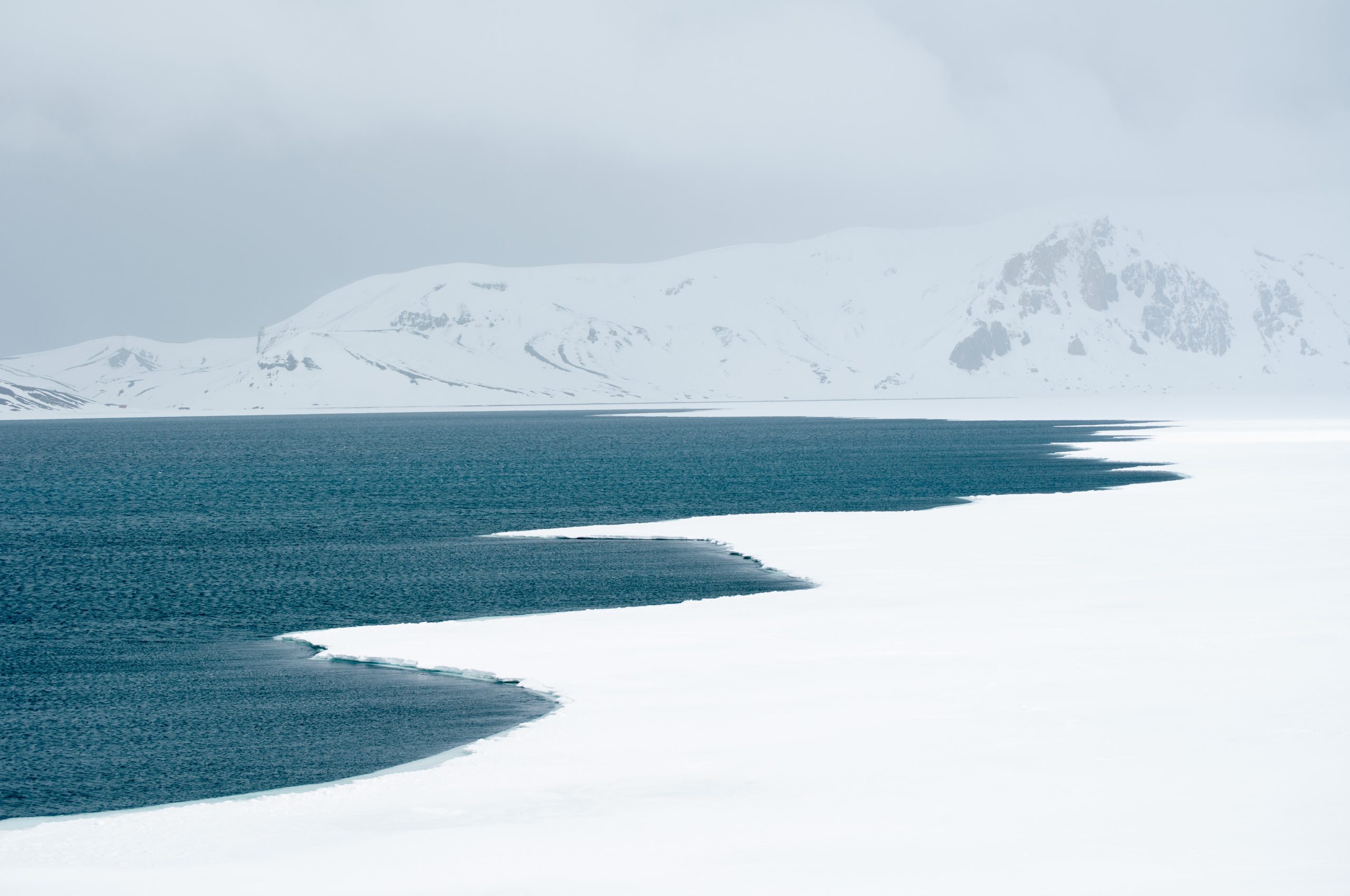
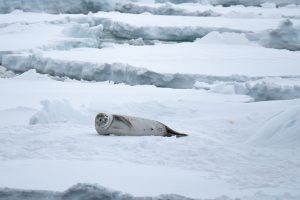

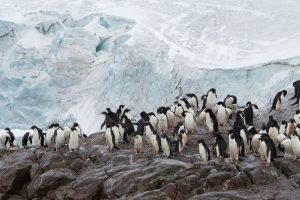
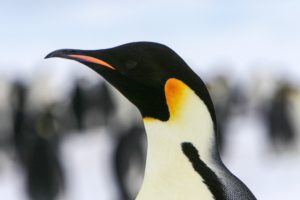
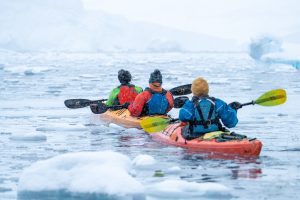
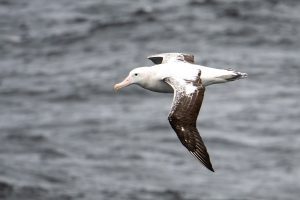

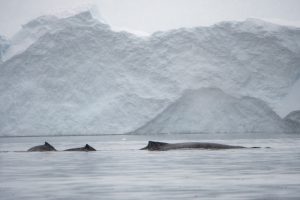
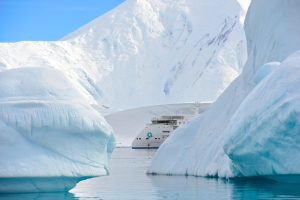
Tour Dates
- October 2026 to March 2027
| Dates | Availability | |
|---|---|---|
Jan 7 – Feb 8, 2027 (33 days) | Available | view pricing chart |
Itinerary
Day 1: Arrive Dunedin, New Zealand
Arrive in Dunedin, where you will be met by a representative and transferred with your fellow expeditioners to your assigned pre-voyage hotel. If you are already in Dunedin, we ask you to make your way to your hotel. In the evening, enjoy light refreshments as you meet your fellow expeditioners at a Welcome Reception and Pre-Embarkation Briefing. Afterwards, enjoy your evening in New Zealand’s southernmost city. You may like to indulge in a meal at one of Dunedin’s fine restaurants, or perhaps enjoy a leisurely stroll along the picturesque Otago harbour.
Day 2: Embarkation
This morning, enjoy breakfast and check-out. Your morning is at leisure to explore Dunedin. In the afternoon embark the ship and settle into your cabin, where each detail was designed with your comfort in mind. This luxurious vessel is yours to explore! As we throw the lines and set sail, join your expedition team on deck before tucking into a delicious dinner, and toast to the voyage ahead.
Days 3: At Sea
On an expedition such as this, the journey is as significant as the destination. Sea days are a wonderful opportunity to relax, meet your fellow travellers and learn about the history, environment and local wildlife in this fascinating corner of the globe. As you acclimatise to life on board, your expedition team is available to answer any questions you may have and offer pro-tips on photography and birdwatching. With decades of collective experience in the region, they love to share their expertise and enthusiasm with fellow travellers. Join them in the lecture room for entertaining talks and presentations to enrich your understanding of the wildlife, landscapes and historic sites we hope to encounter. You may like to pamper yourself with a sauna, a visit to the Wellness Centre, or work out at the onboard gym. While away the hours spotting seabirds on deck, curl up with a book in our well-equipped polar library, or chat with your fellow expeditioners at the bar.
Days 4-6: New Zealand’s Subantarctic Islands
First visited by Māori navigators centuries ago, these islands are of great significance to Ngāi Tahu, the indigenous peoples of New Zealand’s South Island. Their natural beauty and astonishing biodiversity have now been recognised globally, but few have had the privilege to visit these far-flung shores, which are now yours to explore.
Auckland Islands (Maungahuka / Motu Maha)
Born of fire, scoured by ancient glaciers and shaped by the fierce hand of the Southern Ocean, there is an exquisite ruggedness to this group of weather-worn islands. This apparent bleakness belies the extraordinary abundance of life that thrives here. Roughly half of the world’s yellow-eyed penguins (hoiho), most of the world’s white-capped mollymawks, and the entire population of Auckland Islands wandering albatross find shelter on these shores.
Embrace the spirit of exploration as your expedition team designs your voyage from day to day, bringing decades of experience to selecting ideal sites based on the prevailing conditions and wildlife opportunities. Some places we may visit include:
Sandy Bay:
Sandy Bay is home to a breeding colony of rare New Zealand (Hooker’s) sea lions and an enchanting rātā forest where yellow-eyed penguins (hoiho) make their nests.
Carnley Harbour, Erlangen Clearing
Carnley Harbour offers superb Zodiac cruising through a landscape rich in human history. In 1864, five men became stranded here after their schooner, the Grafton, was wrecked, putting a sudden end to their sealing and tin prospecting ambitions. We hope to see the skeletal remnants of the Grafton, and the moss-covered remains of the Epigwaitt Hut, where they sheltered for 20 months.
Victoria Passage
Victoria Passage is a lively channel separating Auckland Island from the mountainous Adams Island to the south. We may Zodiac cruise these scenic waters, watching for sooty shearwaters, penguins and sea-lions frolicking in the pure waters.
Campbell Island (Motu Ihupuku)
Wind and weather permitting, we will Zodiac cruise sheltered harbours and coves in search of Campbell Island snipes and teals, yellow-eyed penguins (hoiho), and New Zealand (Hooker’s) sea lions (whakahao).
We hope to land at Beeman Cove, Perseverance Harbour, where an old meteorological station stands vigil on the windswept shoreline. Follow a boardwalk through tussock and upland tundra, then enter an otherworldly landscape where large-leaved megaherbs abound. Wonder at the Ross Lily, Campbell Island Daisy and Campbell Island carrot, whose brilliant flowers would look more at home in the tropics than these southern climes. Continue towards the nesting grounds of majestic southern royal albatross, whose wingspans can exceed three metres (10 feet). It is truly humbling to be in the presence of these great wanderers of the southern seas. Find a spot to quietly observe these marvellous birds as they go about their daily duties, undisturbed by their human visitors.
Day 7: At Sea
As Campbell Island slips over the horizon, keep watch for Campbell, Salvins and white-capped albatross, which may follow the ship to bid us farewell as we continue south. Join your expedition team in the lecture room to hear about the fascinating human history of Macquarie Island, and how to identify the unique and charismatic creatures we hope to see in the coming days.
Day 8-9: Macquarie Island
“Penguins were in thousands on the uprising cliffs, and from rookeries near and far came an incessant din . . . seabirds of many varieties gave warning of our near approach to their nests” Douglas Mawson, 1911. As they sailed towards Antarctica, Mawson and his men encountered ‘an exquisite scene’. Macquarie Island (known affectionately as Macca) rises steeply from the Southern Ocean in a series of emerald summits: a beautifully fierce, elemental landscape teeming with life.
Keep your binoculars handy because this subantarctic refuge is home to 3.5 million breeding seabirds, including no less than four species of penguin! Alongside boisterous colonies of tuxedoed kings, charming gentoos, robust rockhoppers and endemic royal penguins, you’ll find three types of fur seals and a large proportion of the world’s elephant seals. Layer up and head out on deck to experience the sound, sight (and smell!) as you approach one of the largest concentrations of life in the Southern Ocean.
Remember to keep an eye out for Macca’s kelp forests—these remarkable underwater ecosystems are quite mesmerising as their fronds sway back and forth on the water’s surface. In addition to being a globally recognised and protected wildlife refuge, Macquarie Island played an important role in Antarctic history. It was here, in 1911, that five men disembarked Mawson’s Aurora and established a radio relay station which would transmit the first communication from Antarctica to the outside world.
Days 10-12: At Sea
As Macquarie Island slips over the horizon, keep watch for wandering, grey-headed, black-browed and light-mantled albatross, which may follow the ship to bid you farewell as you continue south. Close observers may notice a subtle change in the character of the sea as we cross the Antarctic Convergence. Beyond this belt where the waters of the north and south mix, the sea surface temperature drops by about 4°C (39°F), signalling our entry into the Antarctic. This transition zone is known for its nutrient-rich waters, so keep watch for porpoising penguins, flocks of fluttering Antarctic petrels, or perhaps the more solitary snow petrel. You’re not far from the Antarctic Circle, so your first iceberg can’t be far away! Join your expedition team in the lecture room for presentations on the charismatic wildlife and extraordinary adventures that took place along the epic Antarctic coastline you are about to experience.
Days 13-18: Ross Sea
It’s almost impossible to describe the feeling of arriving in this storied, ice-bound sector of Antarctica. Stepping outside and taking a deep breath of some of the most fresh, crisp air on earth is an experience to cherish forever. The Ross Sea region is a globally significant wildlife sanctuary. Its nutrient-rich waters support an astonishing array of uniquely adapted Antarctic species, including Ross Sea orcas, Antarctic petrels and South Pacific Weddell seals. It is also home to Antarctica’s largest Adélie penguin colony, and many of the largest emperor penguin colonies. The unique biodiversity of the Ross Sea has been protected within the world’s largest marine protected area since 2016.
The human heritage of the Ross Sea coast is equally impressive. Since James Clark Ross discovered the region in 1841, countless expeditions have built base camps on scattered ice-free slivers of land, using them as staging posts for bold forays across the polar plateau. Many of them departed in a hurry, leaving artefacts, scientific equipment and sometimes entire huts behind. Today these sites are preserved as open-air museums and protected under the Antarctic Treaty System. Embrace the spirit of exploration as your expedition team designs your voyage from day to day, bringing decades of experience to selecting the ideal sites based on the prevailing weather, ice conditions and wildlife opportunities.
Some places we may visit include:
Ross Ice Shelf
Find a spot on deck as we cruise perfectly cleaved ice cliffs towering some 30 metres above the crystalline waters of the Ross Sea. This is the floating edge of the largest ice shelf in Antarctica, which covers an area the size of France. Watch for elegant emperor penguins, sweet-faced Weddell seals hauled out on ice floes, and the unmistakable ‘pouf’ of an orca’s exhalation.
Franklin Island
This delightful ice-free outpost with a rookery of rambunctious Adélie penguins is well worth a visit. Stretch your legs as you stroll up a gentle incline past the colony to a high point, where panoramic views of the Ross archipelago and the ice shelf unfurl.
McMurdo Sound
Enter a realm of exquisite beauty, an otherworldly icescape set against a backdrop of gleaming glaciers, shimmering mountains, and the polar ice sheet itself. McMurdo Sound is the historic gateway to the South Pole and remains a busy working harbour today, serving as a logistics hub for the extensive scientific operations taking place at the McMurdo and Scott Research bases on Ross Island. It is here, in this achingly barren landscape, that early explorers established their base camps and struck out for the South Pole. If conditions allow, we aim to land at one (or more) of their beautifully preserved huts, many of which still stand, to dwell for a moment amongst the artefacts of a distant time, and reflect on the triumphs and tragedies of those who brought them here.
Cape Washington, Terra Nova Bay
Bounded by soaring peaks and fed by immense glaciers, Terra Nova Bay supports an abundance of polar wildlife, including the rarely sighted Arnoux’s Beaked Whale. Fast ice anchored to the bay’s northern shore in the shelter of Cape Washington is home to one of the largest known emperor penguin colonies. Some 20,000 males huddle here each winter, incubating their eggs and awaiting the sun’s return. Weather and ice permitting, visit the bustling rookery to witness the delightful emperors and their fledging chicks.
Cape Hallett
The snow-capped Admiralty Mountains rise dramatically from the gravelly spit of Cape Hallett, where we hope to land. This is the site of a decommissioned scientific base and an abundance of Antarctic mosses, lichens and invertebrates, protected by the Antarctic Treaty System. Amble across gently undulating terrain, taking care to give resting Weddell seals a wide berth. The Adélie penguin rookery here can host close to 50,000 breeding pairs, while snow petrels, Wilson’s storm petrels and South Polar skuas breed in the rocky crevices nearby. Cape Hallett also has a special significance for Aurora. It was from this rocky foothold that Greg Mortimer, co-founder of Aurora Expeditions, launched the Australian Bicentennial Antarctic Expedition in 1988. Cape Hallett provided access to the glaciated coastal ranges beyond, where the six-man team completed the first ascent of Mt Minto (4,165 metres).
Cape Adare
Cape Adare lies 100 km (62 miles) north of Cape Hallet, at the western entrance to the Ross Sea. A rare ice-free refuge on this icebound coastline, Cape Adare is home to Antarctica’s largest Adélie penguin colony. Ice and weather permitting, wend your way through the pack ice to land on the flat, cobbled spit where more than 250,000 breeding pairs of Adélies gather to busily breed, feed and raise their chicks in the short southern summer. First visited by James Clark Ross in 1841, this rocky promontory played an important role in the pioneering expeditions of the Heroic Age of Antarctic exploration. It was here in 1899 that the Southern Cross expedition, led by Carsten Borchgrevink, became the first to winter over in Antarctica and establish the first human structures on the continent. The remnants of these pioneering constructions, and thousands of artefacts scattered in their vicinity, remain virtually untouched and protected under the Antarctic Treaty System. We hope to enter Borchgrevink’s living quarters to experience the awe and imagine the perils of conducting science here, as they did, through an Antarctic winter.
Days 19-26: Expedition Cruising, Cross the International Date Line
As you reach the halfway mark of your voyage, these days at sea offer time and space to reflect on the emotions and special moments you’ve experienced so far. You may like to make some notes in a journal, reminisce with newfound friends at the bar or start editing a backlog of amazing photos. For the next week, find your rhythm and settle into life at sea. Your expedition team will offer a daily program of educational activities, entertainment and citizen science programs, which you are welcome to attend. Join them for lectures and daily recaps of your progress, weather and trajectory. Take advantage of the many shared spaces on board: relax in the sauna, work out in the gym or grab a cuppa and peruse the library shelves as the ice shelves guarding the West Antarctic coast slide by.
There is plenty of time to enjoy the magic of the Southern Ocean and the life that calls it home – especially as you gain a day by crossing the international date line! As always, the best place on the ship is out on deck, where Antarctic prions, snow petrels and great whales await – as long as the seas permit!
As you skirt the forbidding ice cliffs guarding the Antarctic ice sheet, spare a thought for British explorer James Cook, whose historic circumnavigation of Antarctica in the late 18th century encountered nothing but treacherous ‘ice islands’ and perilous winds that threatened to blow their wooden sailboat into the sea ice. Cook left the region firm in the belief that no Antarctic continent could exist, and if it did it “that the world will derive no benefit from it”. The search for Antarctica, which had been going for hundreds of years, ground to a halt, only resuming when a merchant sailor named William Smith chanced upon the South Shetland Islands in 1819. This discovery sparked visits from the sealers, whalers and scientists who would define the earliest eras of Antarctic exploration.
Your voyage continues west past the Amundsen and Bellingshausen Seas, towards the southern extremity of the Antarctic Peninsula.
Days 27-31: Antarctic Peninsula
While on the Peninsula we generally make landings or Zodiac excursions twice a day. Rug up and join a Zodiac cruise to view spectacular ice cliffs or explore grounded icebergs, keeping an eye out for whales, seals and penguins, which frequently travel and feed in these waters. Zodiacs will also transport you from the ship to land, where you can visit penguin rookeries, discover historic sites and explore some of our favourite spots along the Peninsula.
While ashore we aim to stretch our legs, wandering along pebbly beaches or perhaps up snow-covered ridgelines to vantage points with mountains towering overhead and ice-speckled oceans below. If you have chosen an optional activity, you will have the option to do that whenever conditions allow, and of course keen polar plungers will have the chance to fully immerse themselves in polar waters – conditions permitting!
In addition to Zodiac cruises and shore excursions, we may ship cruise some of the narrow, dramatic straits separating offshore islands from the mainland, or linger in scenic bays to marvel at sculptural icebergs and photograph spectacular scenery. This is a great time to enjoy panoramic views from the observation lounge or make your way to the bridge (open at the Captain’s discretion) for uninterrupted views of Antarctica in all its splendour. Keep an ear out for the creak and deep rumble of glaciers as they break off, calving into the sea. Take a quiet moment to experience the wonder of this incredible white continent.
Days 32-33: At Sea
The South Shetland Islands is a volcanic island group around a day’s sail from the Antarctic Peninsula. We aim to land or Zodiac cruise at one of the many appealing coves, bays and beaches, with the opportunity to see chinstrap and gentoo penguin colonies, fur and elephant seals, and the historic remnants of the sealing and whaling age.
In the afternoon, begin your transit north across the Drake Passage. As your journey draws to a close, take some time to reflect on the experiences of the past few weeks. Perhaps you’d like to organise your photos, jot some more notes in your journal or simply relax and soak up the ambiance on board as you farewell your travel mates . . . until next time! We hope you become ambassadors for the great Southern Ocean, advocating for its conservation and preservation, and share your experiences with your loved ones, so they might visit and become ambassadors themselves.
Day 34: Disembark in Ushuaia, Argentina
During the early morning, we cruise up the Beagle Channel, before quietly slipping into dock in Ushuaia, where we will be free to disembark around 8.00 am. Farewell your expedition team and fellow passengers as we all continue our onward journeys, hopefully with a newfound sense of the immense power of nature. Upon disembarkation, for those continuing their travels in the region, transportation to the hotel will be arranged exclusively for guests who have booked their accommodations as part of the voyage or for those staying in downtown areas near the port. Expeditioners departing on flights prior to 12:30 pm will be directly transferred to Ushuaia Airport, those with flights after 12:30 pm will have the opportunity to explore Ushuaia before an afternoon airport transfer, and the transfer procedures and details will be communicated onboard before disembarkation.
Note: At the conclusion of the voyage, we do not recommend booking flights departing Ushuaia prior to 12.00 pm on the day of disembarkation in case there are delays.
This itinerary is operated in remote and challenging environments, and in the spirit of expedition travel, we encourage you to adopt a flexible and adventurous attitude when joining our voyages. This itinerary is a guide only and is subject to change due to permitting and regulatory approvals; and weather, sea state and other conditions beyond our control. Macquarie Island and the New Zealand Subantarctic Islands are protected areas where all visits are subject to permit approvals and quota allocations that are carefully managed by Tasmania’s Parks and Wildlife Service and New Zealand’s Department of Conservation, respectively.
Trips & Rates
Please note, rates are Per Person in USD
Availability & prices are subject to change at anytime
Jan 7 – Feb 8, 2027 (33 days)
| Start: | Dunedin, New Zealand |
| End: | Ushuaia, Argentina |
| Cabin Category | Aurora Stateroom Triple | Aurora Stateroom Twin | Balcony Stateroom C | Balcony Stateroom B | Balcony Stateroom A | Balcony Stateroom Superior | Junior Suite | Captain’s Suite | Solo Balcony Stateroom C | Solo Balcony Stateroom B | Solo Balcony Stateroom A |
|---|---|---|---|---|---|---|---|---|---|---|---|
| Per Person Price in USD | $45,895 | $47,295 | $51,295 | $53,995 | $58,095 | $63,495 | $75,595 | $86,395 | $51,295 | $53,995 | $58,095 |
| Discount | Save 15% | Save 15% | Save 15% | Save 15% | Save 15% | Save 15% | Save 15% | Save 15% | |||
| Discounted Per Person Price | $39,011 | $40,201 | $43,601 | $45,896 | $49,381 | $53,971 | $64,256 | $73,436 | $51,295 | $53,995 | $58,095 |
| Availability | Open | Open | Open | Open | Open | Open | Open | Limited | Full | Full | Limited |
Voyage Ship
Greg Mortimer
Centuries of collective experience were drawn on to map out the Greg Mortimer: purpose-built for expeditions to the most remote places on earth.
The first passenger ship to feature the revolutionary Ulstein X-BOW®, this allows the ship to cross oceans more comfortably and efficiently, and with expansive observation decks to bring you closer to the environment, inviting communal areas and unsurpassed environmental credentials, the Greg Mortimer offers the perfect base camp for adventures at the outer limits of human exploration.
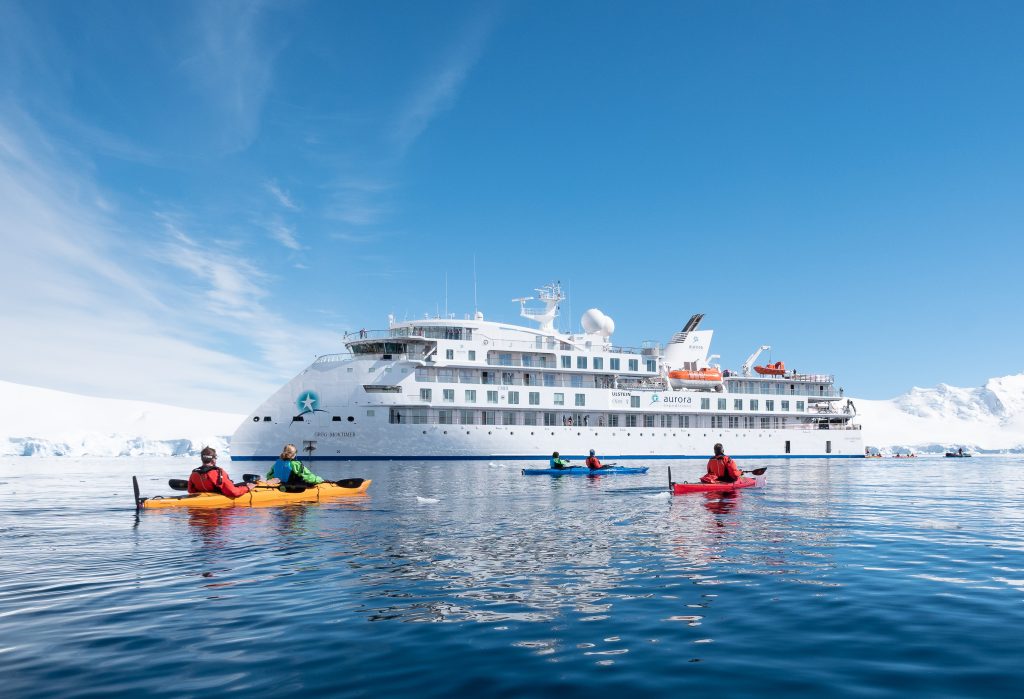
Greg Mortimer Cabins & Deck Plan
Captain’s Suite
DECK 4
The singular Captain’s Suite is the most spacious cabin on the Greg Mortimer and has a preferred low, mid-ship location. Complete with large lounge area, balcony, walk-in wardrobe and en-suite, you’ll need to book early to secure this suite. Additional amenities include 1 free pair of binoculars per suite, free stocked mini bar (replenished as needed), 1 free bottle of champagne and gratuity of $15/person per day for the crew included.
Cabin & balcony combined size: 479 sq. ft. (44.5m2 )
1-2
1 king or 2 twins
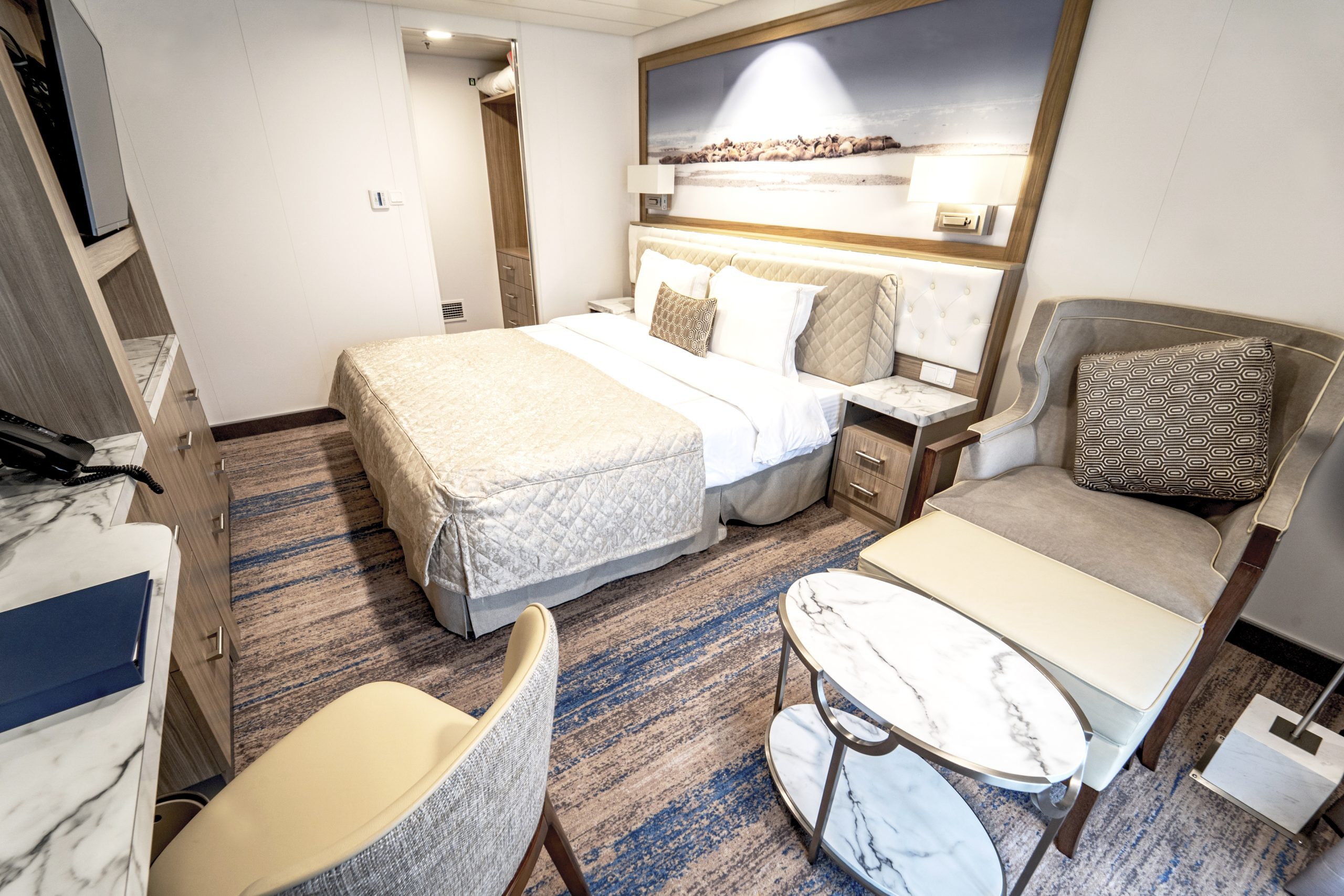
Junior Suite
DECK 7
The Greg Mortimer’s four Junior Suites take in some impressive scenery from their vantage points high on the ship. When you aren’t enjoying a landing, you can relax in the suites’ separate lounge area, or just watch the world float by from the private balcony. Additional inclusions feature 1 free pair of binoculars per suite, free stocked mini bar (stocked once only, not replenished), 1 free bottle of champagne and gratuity of $15/person per day for the crew included.
Cabin & balcony combined size: 419 sq. ft. (39m2)
1-2
1 king or 2 twins
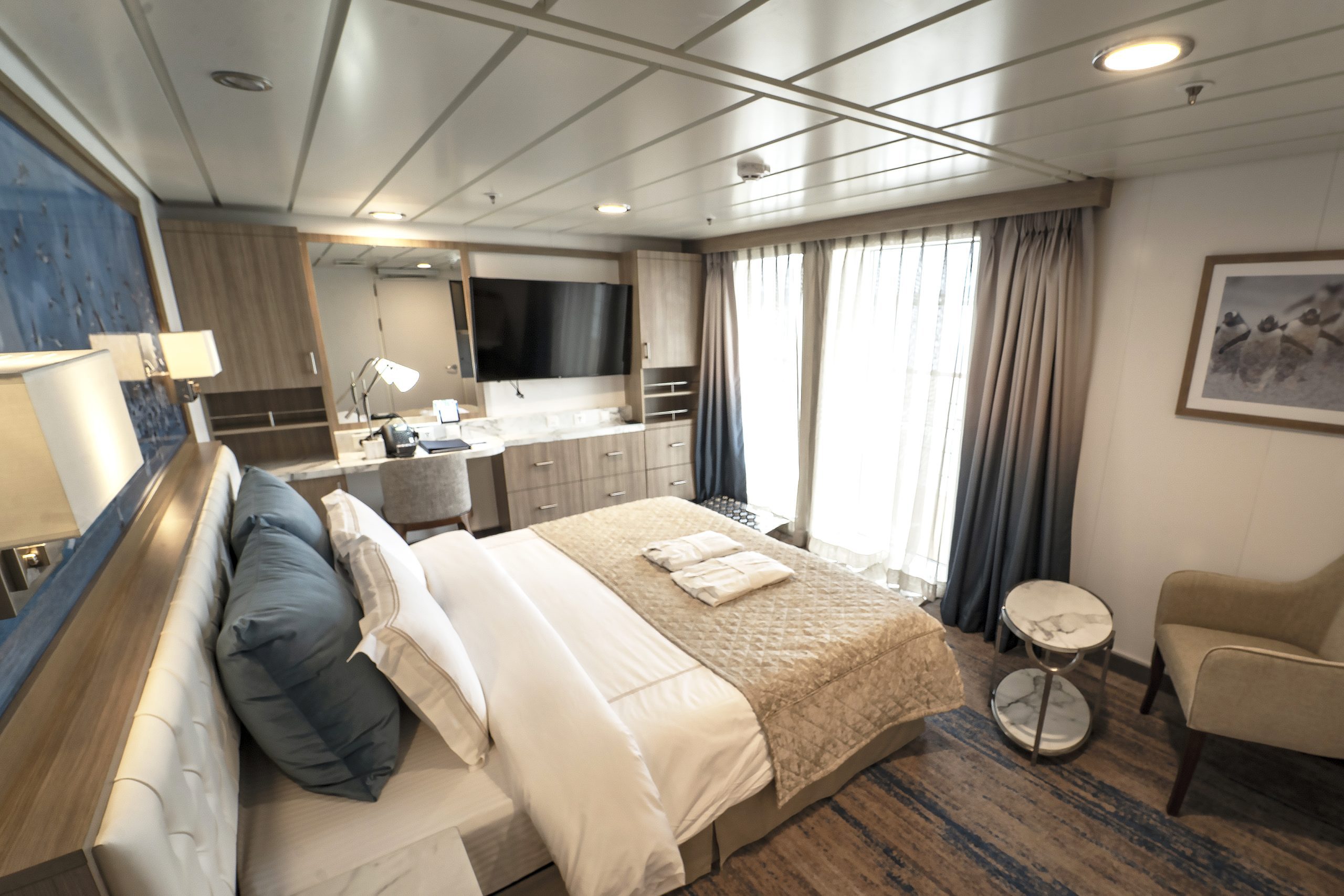
Balcony Stateroom Superior
DECK 4
DECK 6
Balcony Stateroom Superiors feature floor to ceiling windows, en-suite bathrooms and a comfortable desk area. The private balcony is much larger than most of the Balcony Staterooms. Two of these staterooms (#428 & 429) are equipped with wheelchair accessible bathrooms.
Cabin & balcony combined: 303 – 432 sq. ft. (28.2 – 40.2m2 )
1-2
1 king or 2 twins
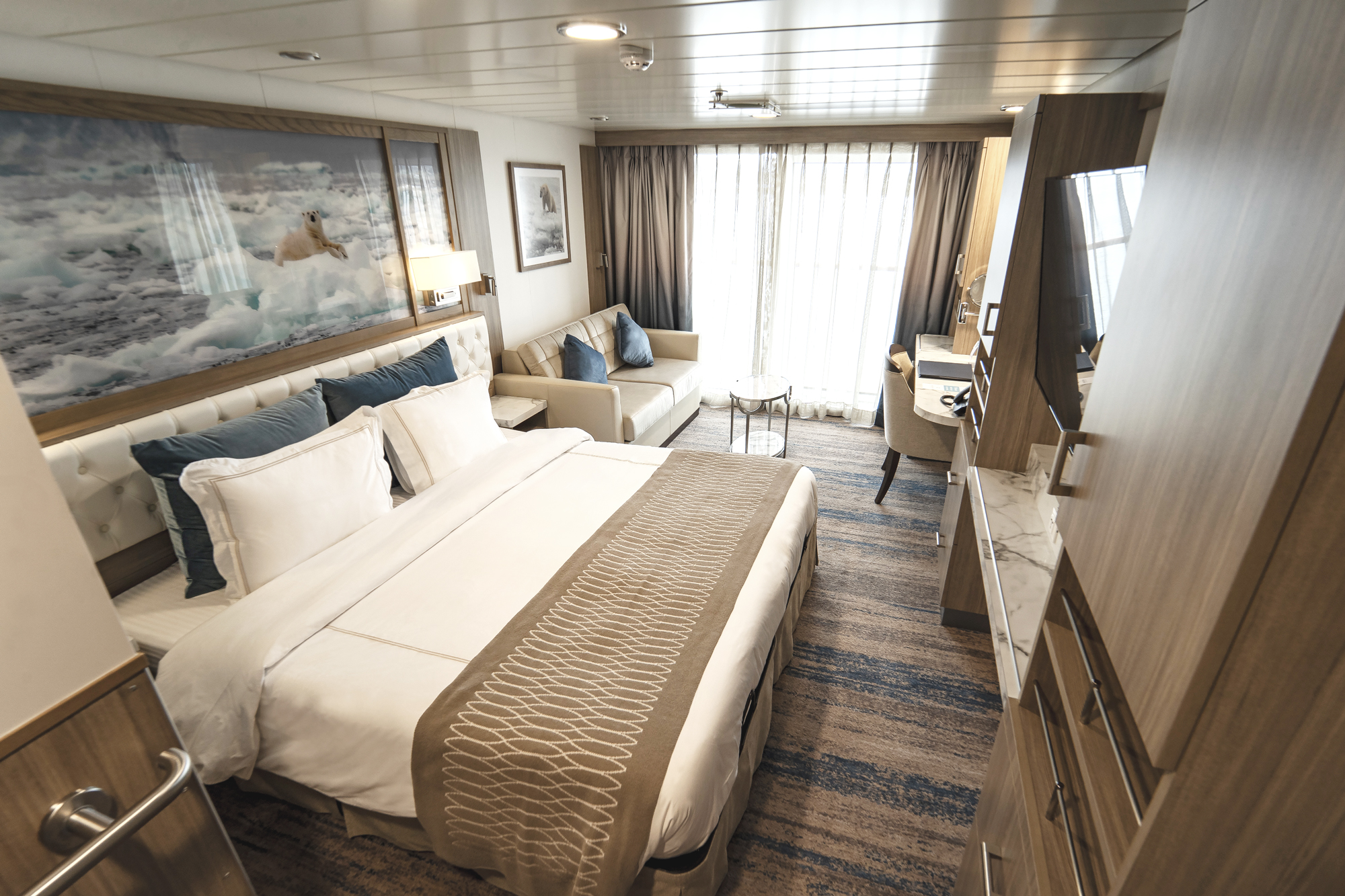
Balcony Stateroom A
DECK 4
DECK 6
The 23 Balcony Stateroom A cabins are a premium cabin and the most abundant on board. These cabins are located in preferred positions which provides easy access between decks via the internal stairs or elevator.
Cabin & balcony combined: 259 – 301 sq. ft. (24 – 28m2)
1-2
1 king or 2 twins
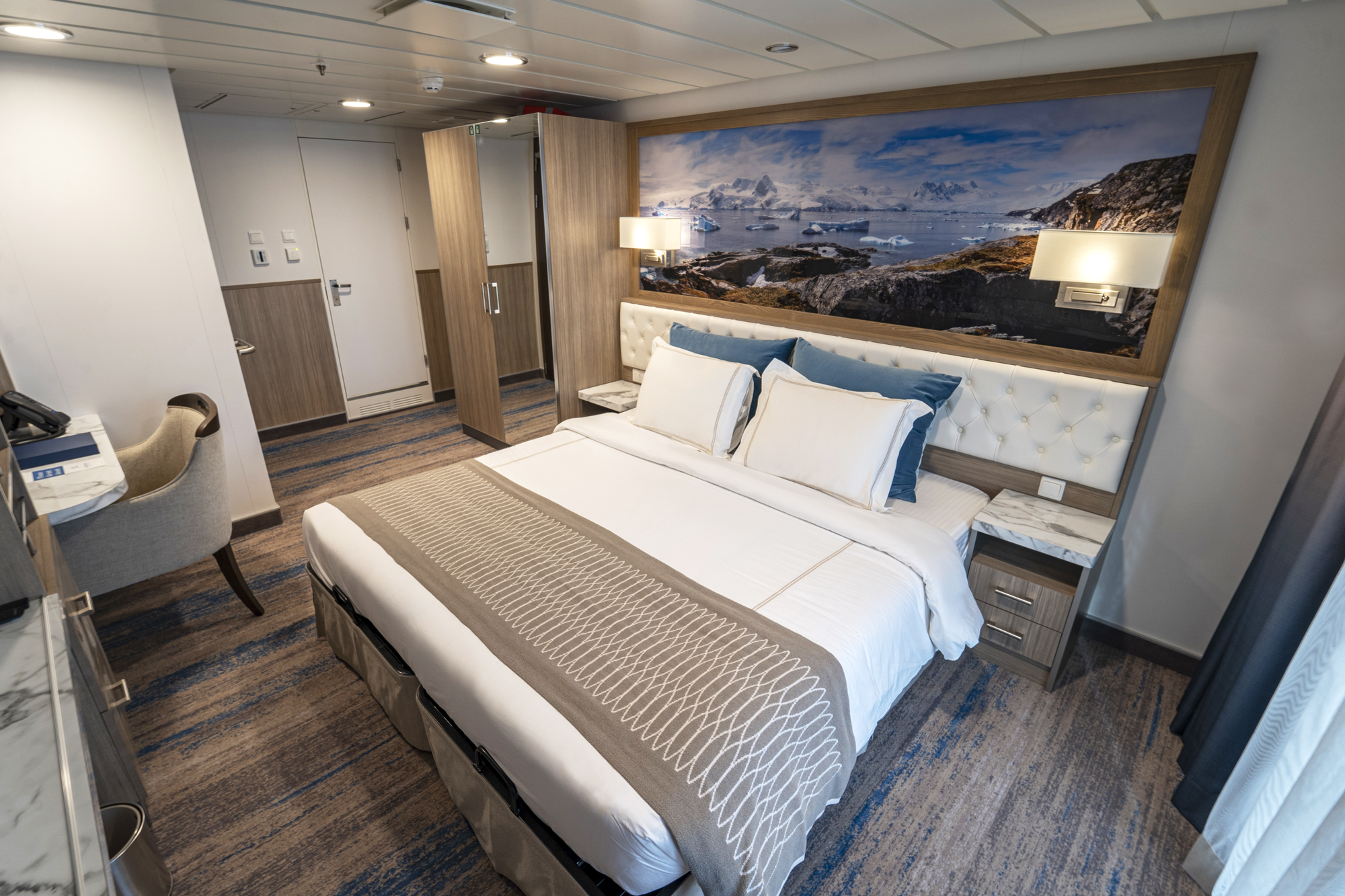
Balcony Stateroom B
DECK 4
DECK 6
The 21 Balcony Stateroom B Cabins are located at the fore and aft. Many are fitted with interconnecting features making them great for families or groups.
Cabin & balcony combined: 254 – 267 sq. ft. (23.6 – 24.8 m2 )
1-2
1 king or 2 twins
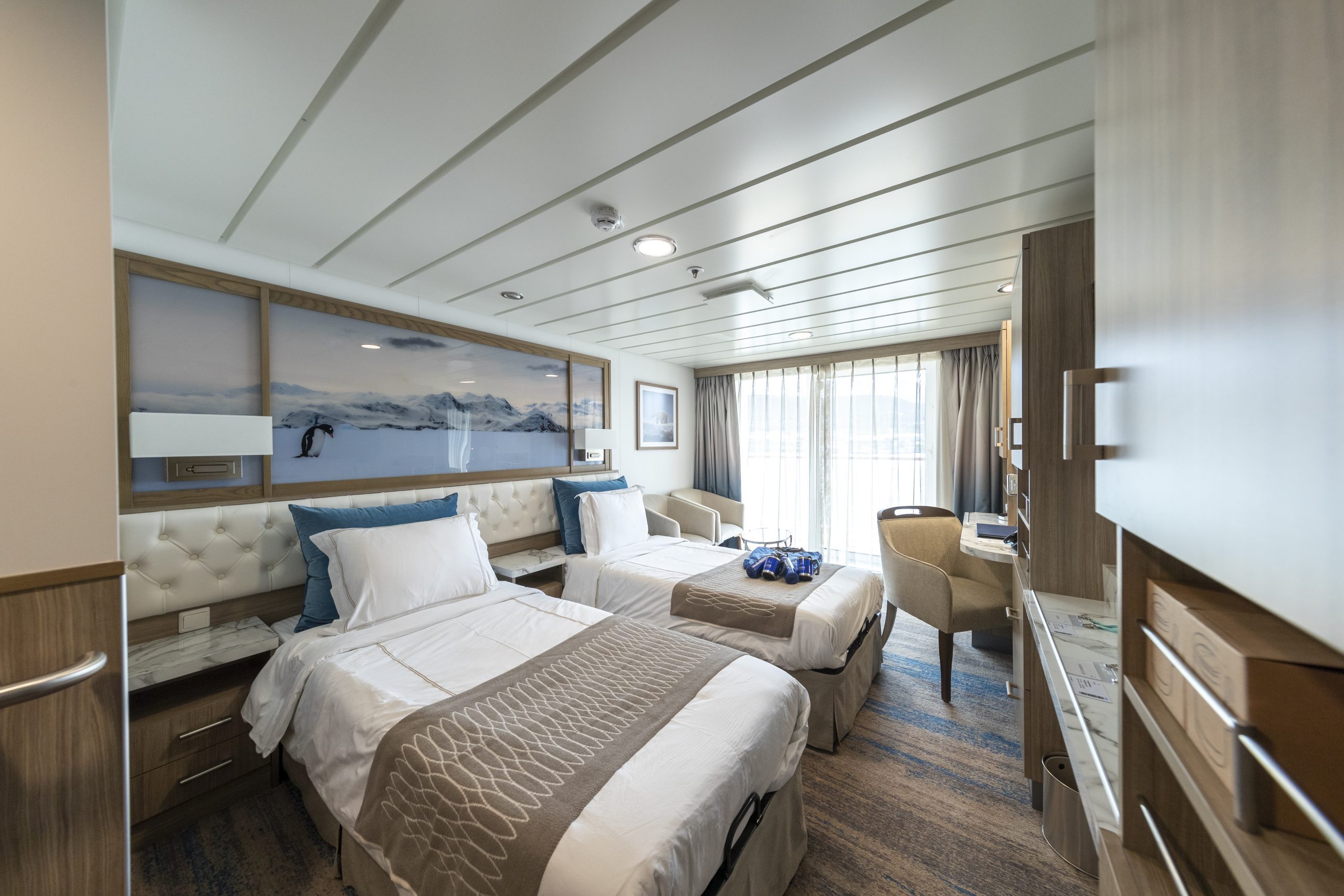
Balcony Stateroom C
DECK 4
DECK 6
The 14 Balcony Stateroom C’s are the most economical balcony cabins fitted with all the necessities and comfortable for up to 2 people. These cabins are either in the most forward or aft location or in a mid-ship location with a smaller cabin size.
Cabin & balcony combined size: 225 – 267 sq. ft. (21-24.8 m²)
1-2
1 king or 2 twins

Aurora Stateroom Twin
DECK 3
The Greg Mortimer features eight Aurora Stateroom Twin cabins featuring portholes, all with private en-suites. Located on Deck 3, they’re close to the mudroom and loading platforms, perfect for adventurers who are looking for a comfortable base that’s close to the action.
170 – 245 sq. ft. (15.8 – 22.8 m²)
1-2
1 king or 2 twins
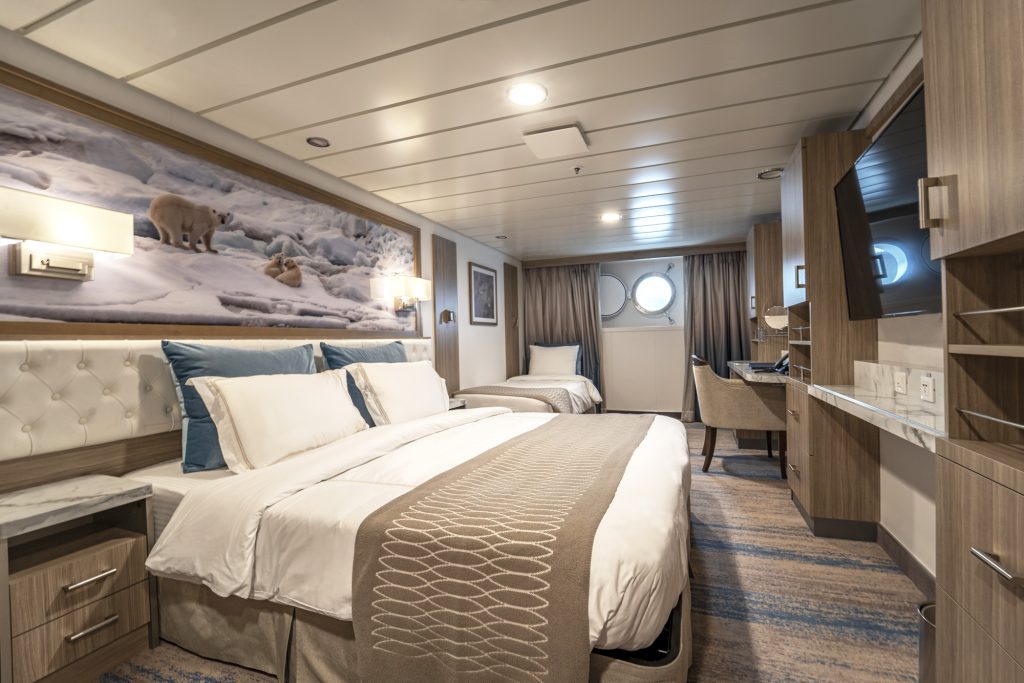
Aurora Stateroom Triple
DECK 3
There are six Aurora Stateroom Triple cabins featuring portholes, all with private en-suites. Located on Deck 3, they’re close to the mudroom and loading platforms.
230 – 245 sq. ft. (21 – 23 m²)
3
3 twins or 1 king + 1 twin
Inclusions/Exclusions
Inclusions:
- All airport transfers mentioned in the itinerary.
- One night’s hotel accommodation including breakfast, in Dunedin on Day 1.
- Onboard accommodation during voyage, including daily cabin service.
- All meals, snacks, tea and coffee during voyage.
- Soft drinks and juices throughout all meals.
- Beer & house wine with dinner.
- Captain’s Farewell reception including four-course dinner, house cocktails, house beer and wine, non-alcoholic beverages.
- All shore excursions and Zodiac cruises.
- Educational lectures and guiding services provided by Expedition Team.
- Complimentary access to onboard expedition doctor and medical clinic (initial consultation).
- One 3-in-1 waterproof, polar expedition jacket.
- Complimentary use of Muck Boots during the voyage.
- Comprehensive pre-departure information.
- Port surcharges, permits and landing fees.
- Wi-Fi*. * Please note we travel to remote regions and therefore the connection can be unreliable.
Exclusions:
- International or domestic flights – unless specified in the itinerary.
- Transfers – unless specified in the itinerary.
- Airport arrival or departure taxes.
- Passport, visa, reciprocity and vaccination fees and charges.
- Travel insurance or emergency evacuation charges.
- Hotel accommodation and meals – unless specified in the itinerary.
- Optional excursions and optional activity surcharges.
- All items of a personal nature, including but not limited to alcoholic beverages and soft drinks (outside of dinner service), gratuities, laundry services, personal clothing, medical expenses or phone charges.
Note: A $15 USD per person per day gratuity for the crew is automatically added to your onboard account. It is at your discretion if you would like to remove the tip (or adjust the amount) when you settle your bill. It is not necessary to tip the expedition team members. This gratuity amount is included for suites as part of their ‘Suite Benefits’.
Solo Travelers
An expedition cruise to the Polar regions is a fantastic trip for solo travelers. On most ships, there is the option to share a cabin with another guest of the same gender to keep the pricing down. Solo occupancy cabins are also an option for guests who prefer to have their own space. Please reach out for more information and pricing for solo travelers.
